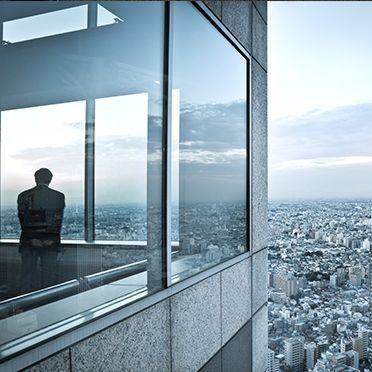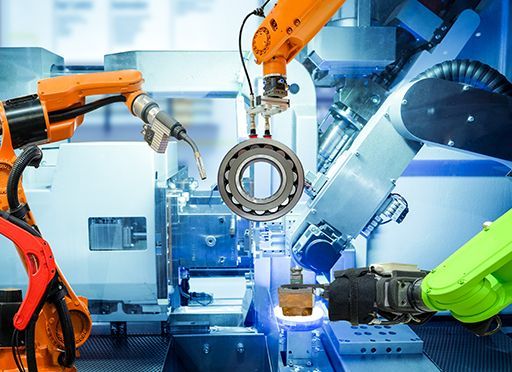Covering Steve Jobs while he was still alive to be interviewed, expert authors detail his business genius.

The One and Only Jobs
Steve Jobs: A Visionary Leader
Today, all personal computers incorporate a version of the mouse-driven graphical user interface that Steve Jobs perfected and popularized. Jobs, who was the driving force behind the Macintosh computer, iPod, iPad, iPhone and iTunes, is an American corporate legend. In this business biography, written before Jobs died, Jay Elliot – a colleague of Jobs’ as a former senior vice president at Apple – and William L. Simon – author of The Art of Deception and Ghost in the Wires – detail Jobs’ corporate achievements, his attention to product detail and his visionary leadership.
Steve and Woz
Technophile Steve Jobs met computer geek Steve Wozniak in 1971 when Jobs was just 16. In time, Jobs and his soul mate “Woz” became partners in a technology start-up, the future Apple Computer Inc. – now Apple Inc. Wozniak had no business savvy; Jobs had plenty. For Apple’s first computer, tech wizard Wozniak needed Intel’s expensive DRAM chips. Jobs convinced Intel to send the chips for free.
Steve is the Michelangelo of product creation; He’ll keep adding brushstrokes to the canvas until he is certain he has it right.Jay Elliot and William L. Simon
Xerox’s Palo Alto Research Center (PARC) in California developed a rudimentary graphical user interface that inspired Jobs, who described the device as “insanely great.” Apple developed it into the ubiquitous mouse. But when Jobs wanted to incorporate certain PARC concepts, Apple was focused on the Lisa computer; the company’s engineers, loyal to Wozniak, ignored Jobs’ wishes.
As Apple grew, it lacked a true command center. Jobs wanted to become its vice president of new product development. Instead, Mike Markkula, Apple’s interim CEO, and Michael Scott, Apple’s president, appointed Jobs as chairman of the company. John Couch, head of the Lisa project, told Jobs to leave him and his engineers alone. So, Jobs took over the Macintosh. His team developed computer control techniques that today’s users take for granted, including moving the cursor with a mouse, clicking to select files or text, and dragging icons and files.
Jobs directed and oversaw every aspect of Macintosh development, concentrating on a single aspect at a time. As soon as he discovered some minor problem, he would direct Apple’s engineers to fix it. Then he’d focus on another design issue.
The user experience drove every production decision Jobs made. He demanded that the Mac provide an elegant experience. For example, he insisted that Apple’s engineers remove the Mac’s cooling fan because he found its humming noise distracting. That was a mistake, and Jobs learned from it.
Teamwork
Jobs believed in the power and synergy of teams. To develop rapport among his team members, Jobs treated his Mac engineers as special employees, as “pirates” who were “outlaw” Mac workers. Each engineer received a “Pirates! Not the Navy” t-shirt. The Navy was meant to refer to Apple’s other engineers who were working on different, “boring” projects. Jobs’ team bonded while working 16-hour days and dealing only with other Mac personnel.
In 1980, Apple went public. In the first hour, it sold 4.6 million shares, the “most successful public stock offering in history.” Suddenly, Jobs was worth more than $200 million – one rich pirate.
A lot of companies ‘message’ by using the word innovation without really doing it or being it. It’s nothing but a marketing spin or a halfhearted, transparent attempt to motivate the troops.
Jobs arranged to have the signatures of the original engineering crew inscribed on the inside of the cases of the first edition Mac. Wozniak added his familiar “Woz.” Anytime Apple awarded a bonus to a Mac team member, Jobs delivered it personally. Apple led the industry in maintaining a low turnover rate – a mere 3%.
Then, CEO John Sculley hired 2,500 people to sell Macs to corporations. Jobs, who disliked Sculley’s strategies, thought Apple should sell directly to consumers. When Sculley removed Jobs from the leadership of the Mac team, Jobs left Apple for 10 years.
And then Apple lost its way. Sculley, accustomed to selling the same Pepsi products year after year, never understood the necessity of developing and marketing the next great product. Apple’s sales plummeted and employees bolted.
Jobs Returns
Jobs sold his Apple stock, keeping only a single share. He started NeXT Computer, Inc. to make cutting-edge machines for the university market. NeXT flattened hierarchies. Jobs’ employees – whom he called “members” – received excellent benefits and produced state-of-the-art computers.
Jobs then purchased Pixar, the digital graphics operation of Lucasfilm. Together, NeXT and Pixar offered top-notch products, but they were not profitable. Jobs subsidized both from his personal bank account, and they made great headway. Pixar’s fortunes changed when it produced the animated movie Toy Story, a $300-million hit for Disney. And, NeXT developed a sophisticated new operating system – NeXTStep.
Sculley left Apple. In early 1997, NeXT developed a new Apple operating system, and Apple purchased NeXT. Apple’s board named Jobs as interim CEO. After 10 years, he was back in charge at the company he co-founded.
Nothing stays the same in business, and the only way to meet innovation is with more innovation.
Jobs believed in collaboration and abhorred committees and bureaucracies. He cut back on the hundreds of products that were in development to focus Apple on the iMac. The way Jobs envisioned it, Apple would manufacture computers and offer high-tech, non-computer products. It also would produce its own hardware and software.
iPod, iTunes, iPhone, iPad
Jobs and his Apple engineers, designers and product developers produced revolutionary, elegant new products. People lined up to buy Apple’s iPod music player, iPad tablet and iPhone. Under Jobs’s leadership, Apple created the iTunes music downloading service.
We’re going to make some history today!Steve Jobs introducing the iPhone
Jobs set up Apple’s product distribution service selling directly to the consumer, first with the online Apple Store, which handled $12 million in sales in its first month, and then with Apple retail stores in high-end, prized locations. Jobs focused on every design aspect of Apple’s stores, including the shelving, flooring and lighting. And, once again, he broke ground well beyond industry standards and carved his own way.
Uncynical admiration
Most business biographies of Jobs – unlike most biographies of his personal life – are hagiographies. And really, why shouldn’t they be? No businessperson since has matched Jobs’ cultural influence, nor his visionary business sense, which spawned not only groundbreaking products but also groundbreaking ways of leading teams and relating to consumers. Somehow, even in today’s climate of constant innovation, Jobs’ creativity, relentless focus and determination – his genius, really – seem even more heroic than those traits did when he was alive. Perhaps that’s because you know that nobody could accomplish now what Jobs did then. The authors don’t conceal their worship of Jobs. Their uncynical admiration makes this a compelling, fun – and, at times, jaw-dropping – history.








